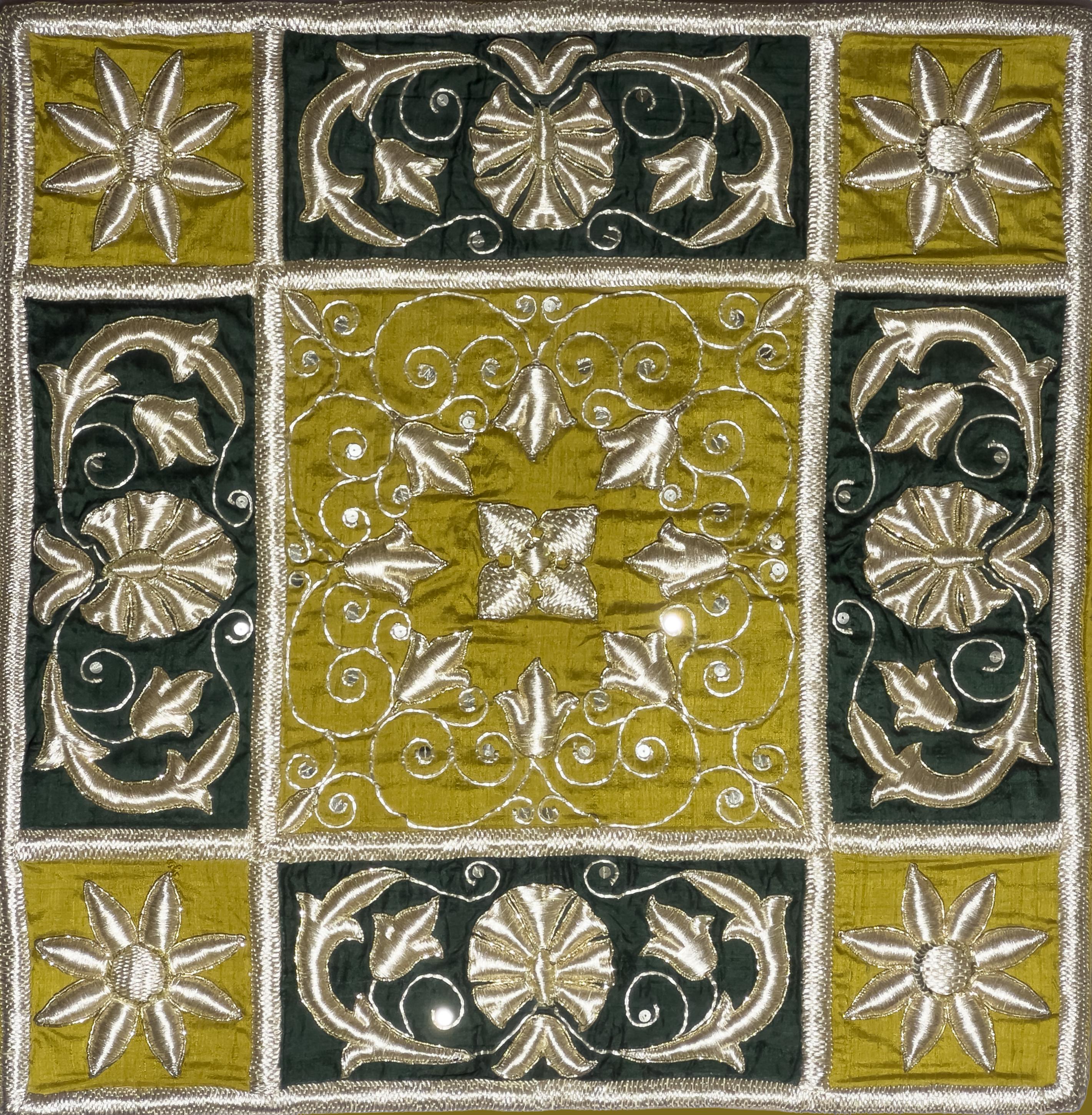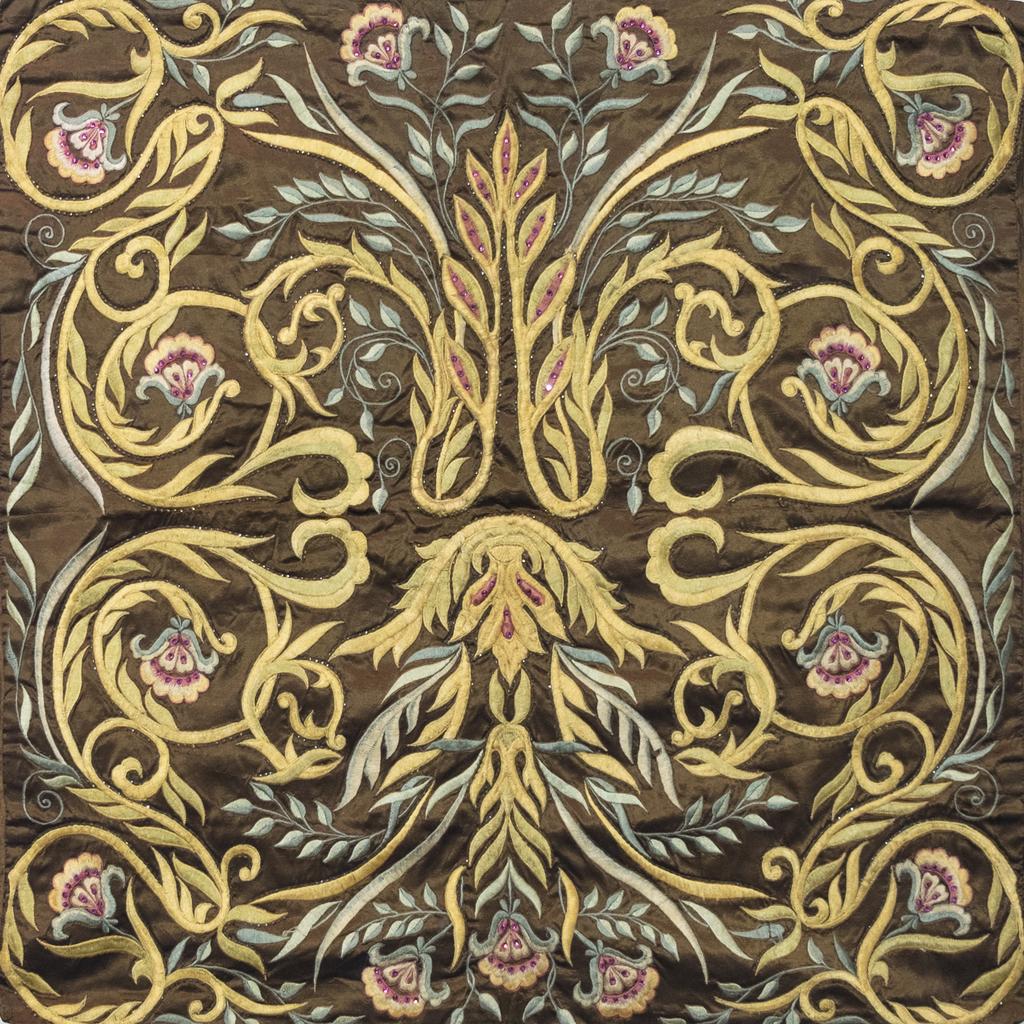Items Similar to Porter Series: Carte L'Europe (Shower Woman)
Want more images or videos?
Request additional images or videos from the seller
1 of 11
William KentridgePorter Series: Carte L'Europe (Shower Woman)2006-2007
2006-2007
About the Item
"Porter Series: Carte L'Europe (Shower Woman)" is a tapestry by South African artist William Kentridge. It is edition 1 of 5 (plus 2 APs) and signed verso "W. Kentridge".
William Kentridge is a South African graphic artist, filmmaker, and theatre arts activist especially noted for a sequence of hand-drawn animated films he produced during the 1990s. The pungent humanism he revealed in these and other works echoed a larger European tradition of artists such as Honoré Daumier, Francisco de Goya, and William Hogarth.
Kentridge, whose father was a noted antiapartheid lawyer, attended the University of Witwatersrand in Johannesburg (1973–76) and the now-defunct Johannesburg Art Foundation (1976–78). At various times in the 1970s and ’80s, he worked as an actor, playwright, set designer, and theatrical director, and he studied mime and theatre in Paris in the early 1980s. In 1992 he began an ongoing collaboration involving multimedia performances with Handspring Puppet Theatre (founded 1981) in Cape Town.
As is clear from both his early training and his later artistic output, Kentridge’s interest in the visual arts was rooted in its connection with the theatrical arts. The narrative structure and character development in his films reflect this connection. While Kentridge pursued several avenues as an artist, at the centre of his work was a sequence of short animated films. To produce them, he made a rough charcoal drawing, photographed it, altered the drawing slightly, photographed it again, and so on. Kentridge’s original drawings are often completely effaced by their successors.
Many of these films—including Johannesburg, 2nd Greatest City After Paris (1989) and Felix in Exile (1994)—follow the fortunes of the greedy capitalist Soho Eckstein and his alter ego, the sensitive and artistic Felix Teitelbaum. They present modern South Africa as reflective of the spiritual, ecological, and emotional crises of late capitalism.
Kentridge later established himself as a consummate figure in the performing arts, particularly for his innovative stagings of the operas The Nose (2010) and Lulu (2015) at New York’s Metropolitan Opera and Wozzeck (2017) at the Salzburg Festival. Critics especially praised his layered use of projected drawings, woodcuts, and animation. His interdisciplinary performance pieces also drew acclaim, notably his rendition of Kurt Schwitters’s 1932 sound poem Ursonate (2017) and of The Head and the Load (2018), a tribute to the African soldiers who served in World War I.
Provenance:
Galleria Lia Rumma, Milan, Italy
Private Collection, acquired from the above
Christie's (New York, NY), March 6, 2014: "First Open Post War and Contemporary Art Sale," Sale 2824, Lot 105
Private Collection, acquired from the above
Exhibition:
Centro de arte contemporáneo de Málaga (Málaga, Spain), “William Kentridge: Won't You Join The Dance?,” February 14 - May 13, 2012; another example exhibited
Literature:
Basualdo, Carlos “William Kentridge: Tapestries,” (New Haven, CT: Yale University Press, 2008)
- Creator:William Kentridge (1955, South African)
- Creation Year:2006-2007
- Dimensions:Height: 96.375 in (244.8 cm)Width: 137.875 in (350.21 cm)
- Medium:
- Period:
- Condition:
- Gallery Location:Palm Desert, CA
- Reference Number:
William Kentridge
William Kentridge (b. 1955) is an internationally acclaimed South African artist renowned for his dynamic prints, drawings, large-scale installations, and animated films. Kentridge balances universal experiences with the complexity of South African political history and society. Born in Johannesburg to two prominent lawyers active in anti-apartheid efforts, Kentridge’s proximity to the dissolution of apartheid gave him a unique social sensitivity. His upbringing would shape the socio-political lens that informed his work as an artist.
About the Seller
4.8
Recognized Seller
These prestigious sellers are industry leaders and represent the highest echelon for item quality and design.
Established in 1996
1stDibs seller since 2011
101 sales on 1stDibs
Typical response time: 6 hours
- ShippingRetrieving quote...Ships From: Jackson, WY
- Return PolicyA return for this item may be initiated within 7 days of delivery.
More From This SellerView All
- Three Old Men/Japanese FukusaLocated in Palm Desert, CAJapanese Fukusa Silk embroidery and gold threadCategory
17th Century More Art
MaterialsSilk
- Dutiful Son/Japanese FukusaLocated in Palm Desert, CAJapanese Fukusa Silk embroidery with gold threadCategory
19th Century More Art
MaterialsSilk
- Fukusa, Pair of LobstersLocated in Palm Desert, CAA silk embroidery by an unknown Japanese artist. “Fukusa, Pair of Lobsters” is from the Meiji Period and in golds and blues. The artwork is unsigned. Provenance: Private Collection, Palm Springs Heather James Fine Art, Palm DesertCategory
Late 19th Century Tribal More Art
MaterialsSilk
- Figure of a Beauty, Japan, Edo PeriodLocated in Palm Desert, CAA Japanese embroidery from the Edo Period. “Figure of a Beauty” is a portrait embroidery, silk and gold thread in golds and grays. Provenance: Priv...Category
18th Century Edo More Art
MaterialsSilk
- Dog and Wagon Embroidery, JapanLocated in Palm Desert, CAA Japanese Embroidery featuring a dog and wagon, silk and gold thread embroidery by an unknown artist from c. 1890. The artwork is unsigned. Provenance: Private Collection, Los Angeles; Heather James...Category
Late 19th Century Tribal More Art
MaterialsSilk
- Embroidered Roundels of TurtlesLocated in Palm Desert, CAA silk and gold thread embroidery of titles. Japan's textile industry was one of the first to adopt Western science and technology, and thus the Meiji era produced some of the highes...Category
19th Century More Art
MaterialsGold
You May Also Like
- Tree of Life - Embroidered Tapestry Wall HangingLocated in Asheville, NCTree of Life One ancient mythical symbol appears across various cultures as the esoteric Tree of Life. The Tree represents life's abundance and immortality. The cosmic mountain is often depicted as the highest point on earth where heaven and earth meet, where Gods dwell; the Tree stands atop it. Specific trees are held sacred and worshipped as the Tree of Life by the different cultures, and it does not bode well to cut the Peepal in India, Bodhi (Peepal) in Buddhist countries, Cyprus in Iran etc. About: "Art is just perception. The first glance is an emotion, your emotion. The title of the canvas is read after that."- Shabbir Merchant...Category
2010s Other Art Style Mixed Media
MaterialsMetal, Gold
- Vintage - Oker & Green Cushion - Embroidered Tapestry Wall HangingLocated in Asheville, NCVintage In the center of Mumbai city is an unorganized labyrinthine bazaar of streets trading in commodities right from gold and silver to utensils to costume jewelry, the list i...Category
Late 20th Century Other Art Style Mixed Media
MaterialsMetal, Gold
- Vintage - Chocolate Cushion - Embroidered Tapestry Wall HangingLocated in Asheville, NCVintage In the center of Mumbai city is an unorganised labyrinthine bazaar of streets trading in commodities right from gold and silver to utensils to costume jewellery, the list i...Category
Late 20th Century Other Art Style Mixed Media
MaterialsMetal, Gold
- Vintage - Magenta Cushion - Embroidered Tapestry Wall HangingLocated in Asheville, NCVintage In the center of Mumbai city is an unorganised labyrinthine bazaar of streets trading in commodities right from gold and silver to utensils to costume jewellery, the list i...Category
Late 20th Century Other Art Style Mixed Media
MaterialsMetal, Gold
- Jaali: Kairi (Paisley) - Embroidered Tapestry Wall HangingLocated in Asheville, NCJaali' of Urdu origin meaning netting, is an ornamental open work originally crafted on wood, metal and stone for interiors. A significant feature of Indo-Islamic art, the Jaali is an intricate pattern ranging from delicate trellises to complex floral layouts. The wall panels depict the interlacing design of the Jaali in mid earth tones on silk. The compositions of flowers and the paisley are embroidered in thread with subtle highlightes of shine. A note on handmade: A handmade product is always appealing due to the irregularities in its workmanship. This is what sets it apart from machine made or computerized; the perfection they offer feels synthetic or artificial. Especially when one speaks of art and craft. These wall panels are works of hand worked embroideries. Imperfections such as an occasional puckering of the base material are expected with the kind of embroidery stitches used. You are assured these artworks are embroidered by highly skilled artisans (it is not possible for craftsmen of lesser experience to create these pieces) The materials used for the embroideries are of superior quality only. About: Shabbir Merchant...Category
2010s Other Art Style Mixed Media
MaterialsTextile, Silk, Fabric, Tapestry, Thread, Yarn
- Jaali: Phulwari (Flower Garden) - Embroidered Tapestry Wall HangingLocated in Asheville, NCJaali: Jaali' of Urdu origin meaning netting, is an ornamental open work originally crafted on wood, metal and stone for interiors. A significant feature of Indo-Islamic art, the Jaali is an intricate pattern ranging from delicate trellises to complex floral layouts. The wall panels depict the interlacing design of the Jaali in mid earth tones on silk. The compositions of flowers and the paisley are embroidered in thread with subtle highlightes of shine. A note on handmade: A handmade product is always appealing due to the irregularities in its workmanship. This is what sets it apart from machine made or computerized; the perfection they offer feels synthetic or artificial. Especially when one speaks of art and craft. These wall panels are works of hand worked embroideries. Imperfections such as an occasional puckering of the base material are expected with the kind of embroidery stitches used. You are assured these artworks are embroidered by highly skilled artisans (it is not possible for craftsmen of lesser experience to create these pieces) The materials used for the embroideries are of superior quality only. About: Shabbir Merchant...Category
2010s Other Art Style Mixed Media
MaterialsFabric, Tapestry, Thread, Yarn, Textile, Silk
Recently Viewed
View AllRead More
Penelope Gottlieb’s Comic-Style Painting Is a Requiem for a Vanished Flower
This piece may look like Pop art fun, but embedded within is a message of a planet on the brink.
10 Reasons Art Collectors Are Obsessed with Andy Warhol
More than three decades after his death, the prolific Pop artist and cultural icon's body of work continues to captivate. Here's a primer of some of his most notable motifs and mediums.






